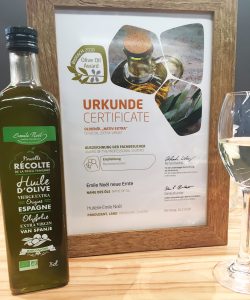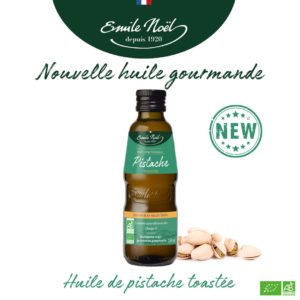Several farmers from Haute Provence came to Pont Saint-Esprit (30) on Tuesday February 22, 2016 to visit Huilerie Emile Noël and learn more about the camel “bio solidaire” chain.
Pierre Gaubert, General Delegate of the Bio Partenaire association (grouping together fair trade and organic solidarity brands) and his associate Claire Touret, were present at this meeting between Cameline producers from Haute Provence, the Tofagne company and Huilerie Emile Noël. The aim of the day was to introduce the Huilerie to farmers, exchange views on the organic camelina solidarity chain, and take stock of the situation with farmers involved or wishing to become involved following the first three years of trials.
The aim of the Bio Partenaire association is to promote camelina production in France, where most of the seeds are currently imported. 15 years ago, camelina cultivation was revived because its production was simpler and better adapted to the French climate than its substitute, rapeseed. What’s more, camelina oil is very similar in taste to rapeseed oil, and its omega-3 content is five to six times higher.
At Huilerie Emile Noël, virgin camelina oil is used in a variety of products and is bottled under the Emile Noël brand. Cosmetics such as Emma Noël lip balm are also made from this oil.
To meet the strong demand for camelina, the association has set itself the goal of making this crop known to as many farmers as possible and increasing the quantities produced each year. 3 years ago, Huilerie Emile Noël and Tofagne (a wholesale company) launched camelina cultivation in Haute Provence under the impetus of Etienne Mabille, producer and manager of Tofagne. This season, more than 8 tons were harvested, and there are plans to produce 15 tons in 2016.
After a tour of the Huilerie in the company of Vincent Llaury, Purchasing Manager, and Bertrand Hugon, Buyer/Procurement Manager, the farmers discussed the difficulties encountered and the factors favorable to growing camelina. An agreement was finally reached to set up “test” farms in order to gain a better understanding of camelina cultivation and formalize agronomic technical documentation to help farmers achieve a good harvest.




